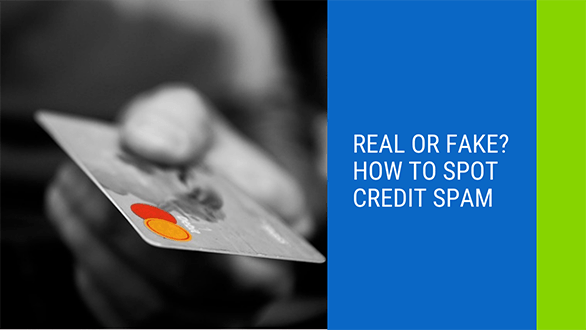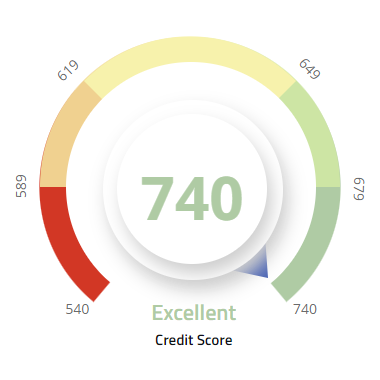
- If you receive an e-mail or SMS about credit, it might not be from the credit provider that it claims to be.
- Falling victim to clicking on spam links or giving up your information puts you at risk of identity theft or having your accounts emptied by a scammer.
- Always confirm with the original company when you receive any e-mail or SMS with an official-looking logo – and especially with a link.
Every once in a while, your bank or credit provider might send you a promotional e-mail to let you know about new features, special offers, or what current loans you might qualify for if you apply.
But not all of these messages are actually from your bank or credit service. Many of these are from scammers, spammers, and other nefarious internet characters who are just after your information or your money.
Here's how to spot the signs of a fake e-mail or message and what to do when you see one.
Different Types of Credit Spam
First, learn to identify the different types of credit spam you might receive. Some of the most popular types of spam messages will –
- Ask you to click on a link in the e-mail.
- Ask you to share your personal information.
- Ask you to “upload documents.”
- Ask you to confirm details.
Most of the time, these e-mails or messages aren't really from your credit provider. They might look official and have the right logo, but they will redirect you to a website that steals your information or ask you to volunteer this information yourself.
Credit spam can often look real, but that doesn't mean it is.
Always Ask: Is This Message Real?
Always ask if an e-mail or message you've received is really from the person or company that it claims to be.
If you aren't sure whether or not a message is authentic, the first thing you should do is look up the contact details of the real company and send them an e-mail with the message you've received. Ask them if it really came from them – and if the message didn't, rely on the original company to let you know.
Because of the fact that these fake e-mails and SMS messages can look so close to real, it's better to never click on a link in an e-mail by default – and never e-mail your login or details to anyone.
If you want to apply for a loan, only do it through the official website of the loan company: Don't follow e-mail or SMS links.
Signs of Fake Credit Messages
How can you spot a fake e-mail or SMS? There are some tip-off signs that the message you’re looking at might be spam that comes from the other side of the internet.
Some of the signs that you might be looking at a fake message includes…
- It doesn't contain your name.
- You don't have an account with the company.
- The link doesn't look the same.
- The message asks for personal information.
- You didn't apply for a loan with this company.
Be careful! Some fake messages can look very, very real: They might even tick some of the boxes that have been mentioned above – and these are the most dangerous ones of all.
The bottom line is that if you aren't sure, you should contact the original company through their official website and ask.
Tell them that you've received an e-mail or SMS that claims to be from them; take a screenshot or attach a copy for proof. If it's not really from the originating company, most companies out there are quick to let you know.
Congratulations: You've just avoided a scam.
Count the Ways to Report Spam
It might be tempting to type a response to the message and click send, but this could actually be dangerous – and it just gives the scammer more information about you than they should have, including your IP-address.
Instead, you should report it. This helps to cut down on spam by letting the right people know it's out there so that action can be taken.
Here are three places to report spam.
1. Contact the Company
Contact the company or financial institution that the message claims to be from and ask them if the message you received really came from them. This is the fastest and easiest way to figure it out without getting caught up in a scam!
2. “Report Spam”
Most inboxes have a “report spam” button – and these are the kind of messages you're meant to use it for. Reporting messages as spam means that you'll be less likely to receive messages of the same type again, and it tips off tech companies that the originating account is a Spam Sender.
3. Report to the NCR
The National Credit Regulator is in charge of registered FSP's – and in charge of taking down companies who aren't on the list, but claim to be. Report any unregistered credit companies directly to them.

